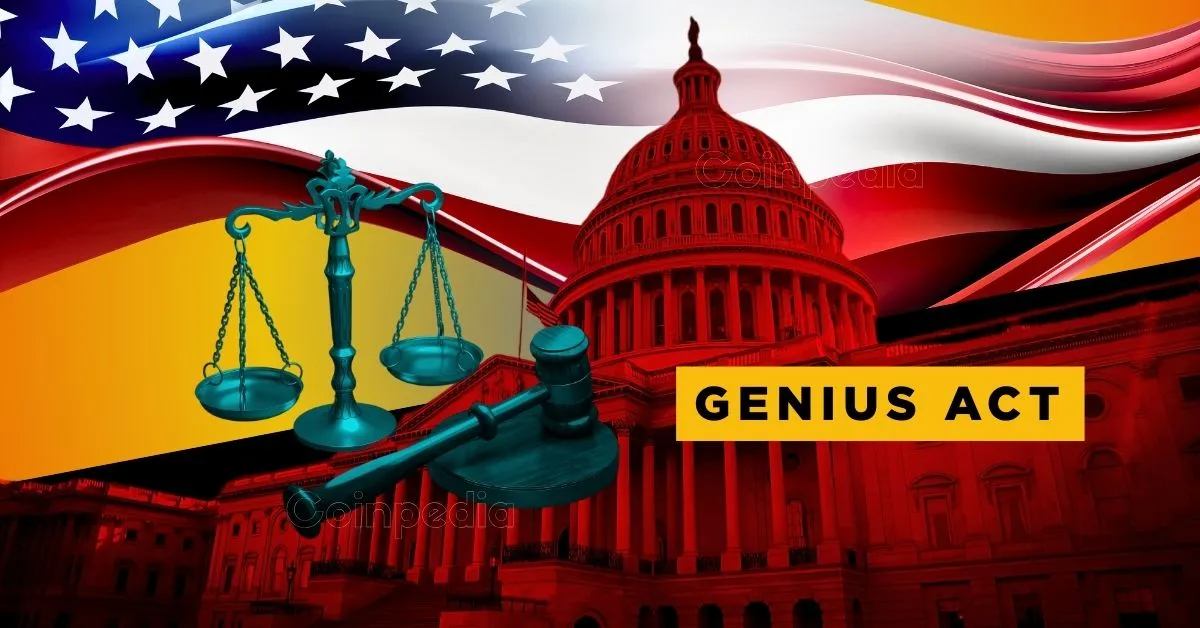GENIUS Act: A New Dawn for Stablecoin Regulation?
In a landscape often painted with uncertainty, a beacon of clarity has emerged from Capitol Hill. The U.S. Senate has recently passed the Guiding and Establishing National Innovation for U.S. Stablecoins (GENIUS) Act by a vote of 68-30. This event is not merely another headline in the volatile world of cryptocurrency; it represents a seismic shift toward mainstream acceptance and responsible regulation of digital assets. But what exactly does this Act entail, and what are the implications for the future of stablecoins?
Stablecoins Defined: Anchors in the Crypto Sea
Imagine navigating a turbulent sea without an anchor. That’s what the crypto market felt like before the rise of stablecoins. These digital currencies are designed to maintain a stable value, typically pegged to a traditional asset like the U.S. dollar. They serve a critical function within the crypto ecosystem, facilitating smoother trading, providing a safe haven from volatility, and fueling the expanding realm of decentralized finance (DeFi).
However, this innovative tool has been operating in a regulatory vacuum. The absence of clear rules has raised legitimate concerns about consumer protection, financial stability, and the potential for illicit activities. The GENIUS Act seeks to address these concerns head-on, providing a framework for stability and trust.
Decoding the GENIUS Act: A Blueprint for Legitimacy
The core of the GENIUS Act lies in its commitment to establishing a national regulatory standard for stablecoins. Key provisions include:
- Reserve Requirements: Ensuring that stablecoins are backed by sufficient and readily available reserves. Think of it as a safety net, guaranteeing that holders can redeem their stablecoins for the equivalent value in the underlying asset.
- Regular Audits: Mandating independent audits to verify the accuracy and transparency of reserve holdings. This builds trust by providing an objective assessment of a stablecoin’s financial health.
- Robust Oversight: Establishing a clear regulatory authority to oversee the operations of stablecoin issuers. With designated oversight, the market can be more secure and accountable.
These provisions are designed to provide clarity for businesses, protect consumers from potential pitfalls, and foster innovation within the stablecoin arena. In essence, the GENIUS Act aims to transform stablecoins from a Wild West commodity into a regulated and reliable component of the global financial system.
Bipartisan Bridge: A United Front on Crypto
The GENIUS Act’s journey through the Senate was marked by a rare display of bipartisan cooperation. Sponsored by Republican Senator Bill Hagerty and co-sponsored by Chairman Tim Scott, the bill garnered support from both sides of the aisle. This collaborative spirit underscores a shared understanding of the need to address the regulatory void surrounding stablecoins, a void that transcends political lines.
The bill’s passage through the Senate Banking Committee with an 18-6 vote signaled early momentum, and vocal support from key players in the crypto industry further boosted its prospects. The fact that the bill passed approximately six weeks after its introduction highlights the urgency lawmakers felt to address the issue. This contrasts sharply with prior attempts at crypto regulation, where partisan gridlock often stalled progress.
$254 Billion and Counting: The Untapped Potential
The stablecoin market has exploded in recent years. With a market capitalization exceeding $254 billion, these digital currencies are rapidly transforming the financial landscape. The GENIUS Act aims to unlock the next phase of growth and widespread adoption by creating a clear regulatory environment.
The bill, by bringing in institutional investment, fostering innovation, and bolstering consumer confidence in stablecoins, promises a well-defined regulatory framework that can mitigate risks like potential liquidity crises or systemic failures. The GENIUS Act is seen as a catalyst for the broader acceptance and integration of digital assets into mainstream finance.
The House Awaits: A Test of Endurance
Despite the Senate’s triumph, the GENIUS Act still faces a major hurdle: the House of Representatives. House lawmakers now have the crucial task of deciding whether to adopt the Senate’s version, amend it, or pursue alternatives.
The House has previously approved stablecoin legislation that ultimately failed to gain traction in the Senate. This history suggests that reaching a consensus in the House could prove challenging. The legislative dynamics are also shifting, with Democrats no longer in the Senate majority. The window for action is tight, with a vote anticipated within the next three weeks.
Not the Finale: The Importance of Comprehensive Regulation
The Senate’s approval of the GENIUS Act is indeed a pivotal event for the cryptocurrency industry and a major step towards responsible innovation. Its bipartisan support reflects a growing awareness of the potential benefits of stablecoins and the need to manage the risks. The journey, however, is far from over.
The bill’s ultimate success depends on its ability to navigate the complexities of the House and be signed into law. Even then, the GENIUS Act is likely just the first step in a broader effort to regulate the rapidly evolving world of digital assets. Continuous monitoring, adaptation, and collaboration among lawmakers, regulators, and industry participants will be critical to ensuring that the regulatory framework remains effective and promotes a vibrant and responsible crypto ecosystem. The future of stablecoins, and the broader crypto industry, now rests on the decisions made in the weeks ahead.

